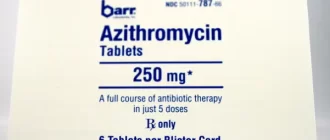Oral psoriasis is an often misunderstood manifestation of a more commonly recognized skin condition, psoriasis. Affecting the mucous membranes of the mouth, this form can be elusive, as symptoms are not as visible as typical skin lesions. Below, we explore the symptoms, challenges, and modern treatment approaches to oral psoriasis, with an emphasis on clinical facts and insights from recent medical studies.
Understanding Oral Psoriasis
Oral psoriasis is rare compared to other types of psoriasis, affecting about 0.1-2% of people who have psoriasis. Unlike the scaly patches seen on the skin, oral psoriasis manifests differently—often as white or gray patches, which can be confused with other oral conditions such as lichen planus or leukoplakia. This rarity and similarity to other diseases make oral psoriasis challenging to diagnose.
Did you know? Oral psoriasis is more common in individuals with plaque psoriasis, suggesting a potential overlap in underlying immunological mechanisms (Smith et al., 2022).
Symptoms to Watch For
The symptoms of oral psoriasis vary but typically include:
- White or grayish lesions on the tongue, cheeks, or inner lips.
- Burning or pain, particularly when eating hot or spicy foods.
- Patches that resemble geographic tongue, a condition where the tongue appears map-like due to red and white areas that shift over time.
These symptoms often overlap with other oral conditions, which can complicate diagnosis. Unlike skin psoriasis, oral psoriasis tends to have less well-defined borders, further adding to the challenge of identifying it.
Current Trends in Diagnosis
Diagnosis of oral psoriasis can be quite challenging due to its similarity to other conditions. Currently, it is largely diagnosed through a combination of clinical observation and patient history, especially if the patient has skin psoriasis elsewhere on the body. A biopsy is often required for confirmation.
Interesting Fact: A recent survey showed that over 40% of dermatologists consider oral psoriasis difficult to diagnose without a skin manifestation (Journal of Dermatological Research, 2023). This highlights the importance of an interdisciplinary approach, often involving both dermatologists and oral health specialists.
Triggers and Exacerbating Factors
Oral psoriasis, like other forms of psoriasis, can be influenced by several external and internal triggers. These may include:
- Stress: One of the most recognized triggers for psoriasis flare-ups.
- Infections: Particularly upper respiratory infections, which can lead to exacerbations.
- Dietary irritants: Spicy or acidic foods often worsen the symptoms, making the patches more painful.
Treatment Options: What Works Best?
The treatment for oral psoriasis involves a nuanced approach due to the delicate nature of the oral mucosa. Here are some of the most effective treatments currently used:
- Topical Corticosteroids: Often the first line of treatment, these are applied directly to the lesions to reduce inflammation. Since the oral mucosa absorbs medication quickly, lower-potency corticosteroids are typically recommended.
- Vitamin D Analogues: Calcipotriol, a vitamin D analogue, has shown promise in treating oral psoriasis with fewer side effects compared to steroids.
- Phototherapy: Though uncommon, some recent trials suggest that targeted UV light therapy might help with severe cases of oral psoriasis, especially if combined with systemic treatments.
- Biologics: Medications like etanercept and adalimumab are used systemically for patients with severe psoriasis, and they have shown benefits for oral lesions as well.
Price Insight: Topical corticosteroids for oral psoriasis generally cost between $20 and $40 per tube without insurance, depending on potency and formulation.
A Practical Guide: Managing Symptoms at Home
While medical treatment is essential, there are practical measures that can help alleviate the discomfort of oral psoriasis:
- Avoid spicy, acidic, and very hot foods, which can exacerbate the pain.
- Maintain good oral hygiene without using harsh mouthwashes that contain alcohol, as they can irritate the mucosa.
- Use a soft-bristled toothbrush to avoid causing additional trauma to sensitive areas.
Did you know? Recent studies have shown that patients who maintain a balanced diet with anti-inflammatory foods, such as omega-3 fatty acids, experience fewer flare-ups of oral psoriasis (Nutrition & Immunology Journal, 2022). Incorporating flaxseed, fish, and leafy greens may not cure the condition but can help manage the inflammation associated with it.
Challenges in Treatment: A Closer Look
One of the biggest challenges in treating oral psoriasis is patient compliance. The oral cavity has a constantly moist environment, and topical treatments are often washed away by saliva, making it difficult to maintain effective contact time. Additionally, the potential side effects of corticosteroids, such as oral thrush, can deter patients from consistent use.
Clinical Example: In a case published in The International Journal of Oral Science (2022), a patient with concurrent skin and oral psoriasis showed significant improvement in oral lesions after transitioning from topical steroids to a systemic biologic treatment, illustrating the potential benefits of an integrated approach.
Editor’s Advice: Living with Oral Psoriasis
Living with oral psoriasis can be challenging, but it is manageable with the right treatment plan and lifestyle adjustments. If you experience symptoms like unusual patches or a persistent burning sensation in your mouth, consult a healthcare professional—ideally one experienced with psoriasis. Combining medical treatment with mindful dietary choices and stress management can help control symptoms and improve quality of life. Remember, the key to managing psoriasis effectively lies in a proactive, informed approach.




